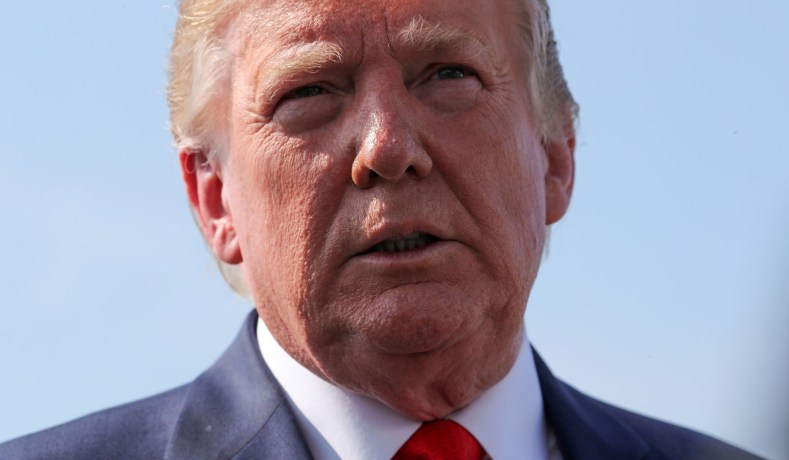
CONTRIBUTOR
December 5th, 2018
In the face of congressional inaction, the Trump administration has set out to reform Obamacare by executive order. The reforms stretch the boundaries of what many thought was possible without an act of Congress. Although some changes are still in the comment period (before the rules become formalized), the Trump reforms in some ways are more radical than Obamacare itself.
Personal and portable health insurance. The United States has a long history of encouraging health insurance at the place of work. Premiums paid by employers avoid federal and state income taxes as well as the Social Security (FICA) payroll tax. By contrast, unless they get Obamacare subsidies, most Americans receive no tax relief if they buy health insurance on their own.
Unfortunately, group insurance is not portable. When people leave their job, many must turn to individually purchased health insurance instead. This is the primary source of the “pre-existing condition” problem. Before Obamacare, insurers in the individual market could and did deny coverage to people with expensive health conditions, although Wharton health economist Mark Pauly finds that the instances of this were rare.
So why not let employees have insurance they can take with them from job to job and in and out of the labor market? This idea is highly popular in public opinion polls. But under the Obama administration, employers who did this could be fined as much as $100 per employee per day, or $36,500 per employee per year – the largest fine in all of Obamacare.
The Trump administration is proposing to get rid of those fines and actually encourage the purchase of individually owned insurance, using employer funds, through something called a Health Reimbursement Arrangement (HRA). Small businesses are allowed to do this as a result of the 21st Century Cures Act, passed in 2016. Trump is now proposing to allow employers of any size the same opportunity.
Given the sorry state of the individual market in most places, why would employers and their employees find this option attractive? Because of other Trump reforms.
In addition to broadening the scope for Association Health Plans earlier in the year, the administration announced last Thursday that states will have the ability to (1) create risk pools and/or risk reinsurance in order to bring down premiums for average buyers, (2) create defined contribution accounts (combining Obamacare subsidies with other money) from which families can select health insurance that better meets their needs, (3) use Obamacare money to create a new and different system of subsidies and (4) create new insurance options, including non-qualified health plans.
Then on Monday, that administration released Reforming America’s Healthcare System Through Choice and Competition. This is the first time any administration has explicitly acknowledged that the most serious problems in health care arise not because of market failure, but because of unwise government policies; and it is the first time the federal government has committed to the idea of liberating the medical marketplace. In many ways the document is very similar to ideas I first proposed in Regulation of Medical Care: Is the Price Too High? (Cato: 1980)
I’ll have more to say about these policy changes in future posts.
The Treasury department believes as many as 10 million people will obtain individually owned insurance through their employers under the new rules. Harvard Business School’s Regina Herzlinger thinks the number could be much higher than that.
Tax fairness. The latest Trump executive order goes a long way toward eliminating unfairness in the tax code. For example, an above-average-income family would be able to obtain individually owned insurance with the same tax advantages as group insurance.
Below-average-income families have the opposite problem. Since these families pay no income taxes, their only tax subsidy at work is the avoidance of the payroll tax. This is well below the subsidies available in the Obamacare exchanges. Going forward, these families will be able to use employer money to obtain subsidized insurance in the exchanges. (But there will be no double dipping – it’s one subsidy or the other.)
A flexible savings account. More than 30 million Americans have a Health Savings Account, allowing them to manage some of their own health care dollars. These accounts are rigidly constrained, however. Because of an across-the-board high deductible and other requirements, most health plans sold in the Obamacare exchanges are not HSA-compatible.
HRAs, by contrast, can wrap around any health insurance plan and are available to pay for expenses insurance doesn’t pay for. Employer deposits to HRAs would give employees access to the full range of products available on the individual market. Money not spent on premiums would be available to pay other expenses, including deductibles and copayments.
Insurance tailored to family needs. Obamacare tries to force low-income families to buy the wrong kind of insurance. If a low-income couple has the misfortune to have a million-dollar premature baby, Obamacare insurance will pay the hospital the million dollars. But under some plans, the couple must pay the first $7,000 of medical expenses out of their own pocket. That’s great for hospitals, but it does almost nothing to help the family.
Before there was Obamacare, fast food workers often had limited benefit insurance – paying, say, the first $25,000 or $50,000 of medical expenses. This kind of insurance gave them easy entry into the health care system, although the cost of rare, catastrophic events was shifted to others.
Fast food workers tend to be among the 28 million people who are currently uninsured. Many of them are turning down Obamacare insurance – whether offered by an employer or in an exchange.
Under the new executive order, however, their employers can deposit up to $1,800 in an Excepted Benefit HRA, from which employees can purchase all types of primary care, including phone and email consultations, Uber-type house calls, the services of walk-in clinics, etc. They could also take advantage of the next option.
Free market health insurance. Historically, “short-term, limited duration” health plans have served as a bridge for people between jobs or migrating from school to work. They are not subject to Obamacare regulations and they can charge actuarially fair premiums. Although they typically last up to 12 months, the Obama administration restricted them to 3 months and outlawed renewal guarantees beyond that.
The Trump administration has now reversed those decisions, allowing short-term plans to last up to 12 months and allowing guaranteed renewals for up to three years. The ruling also allows the sale of a separate plan, called “health status insurance,” that protects people from premium increases due to a change in health condition should they want to buy short-term insurance for another 3 years.
By stringing together these two types of insurance, people will likely be able to remain insured indefinitely, with plans that look like a typical employer plan. The expected number of enrollees ranges from 1.9 million ( Medicare’s chief actuary) to 4.3 million (Urban Institute).
Yet as long as people are free to choose insurance that meets individual and family needs and as long as it is fairly priced, I think the real number will be even higher.

0 Comments